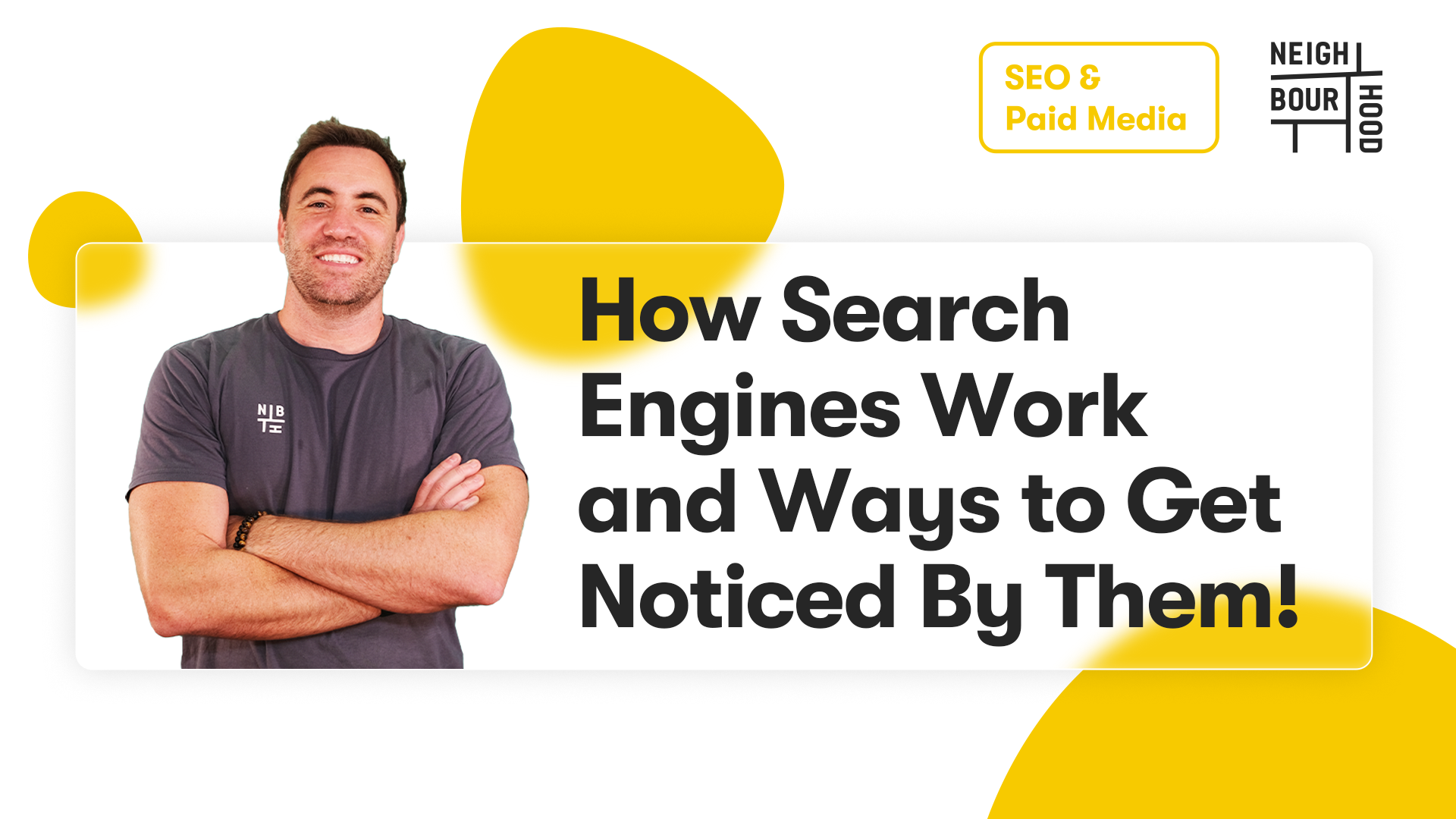Creating content to educate and provide value to people is a crucial element of inbound marketing, and SEO strategies are what help get this information recognised. But before we start talking about SEO (search engine optimisation) strategies or even trying to understand SEO as a topic, let's get back to basics. Because how are you going to know how to standout to search engines if you don't even know how they work ? The following blog post aims to take you through what exactly defines a search engine and how it functions !
Essentially, the internet is a huge collection of pages intertwined together via links, similarly how places are connected by roads. The three primary functions of a search engine include:
1. Crawl
Scour the Internet for content, looking over the code/content for each URL they find.
2. Index
Store and organise the content found during the crawling process. Once a page is in the index, it’s in the running to be displayed as a result to relevant queries.
3. Rank
Provide the pieces of content that will best answer a searcher’s query, which means that results are ordered by most relevant to least relevant.
Back in the beginning of the World Wide Web, getting connected with websites could only happen if you knew the website’s web address or clicking a link from another page. Yikes, right? Luckily, in comes the early 90s were the web grew so complex that someone birthed what we now recognise as the first search engine. Allowing users to type keywords and receive a list of relevant pages. However, it wasn’t till the late 90s that Google was released which transformed the way search engines functioned and how useful they were to their users.
While Google’s algorithm seems complicated and overwhelming, it’s pretty straightforward once you boil down the details. In its simplest and most condensed form, it works as a really accurate pattern detection program. To most people, they see keywords and terms being put in and a list of relevant websites that match the search coming back. However, most do not realise that searching google is looking through their index of the web, all the links they have already examined and ‘crawled’.
What is search engine crawling?
Crawling is the discovery process were search engines send bots (known as spiders) to uncover new and updated content. While the content may vary, the spiders will always examine as long as they are discoverable by links. Google uses other pages and follows links to delve further, or a list of pages (a sitemap) if a website owner submits it for Google to crawl. As Google continues to crawl all of these pages, a copy is stored on Google's servers. This is Google's index, and it's stored in a way that allows Google to quickly search through the billions of pages in the index. When you search for a certain phrase, Google checks the index to get a list of every page that's related to your search phrase. Wow, how neat?
To improve your site crawling as provided by Google
- For changes to a single page, you can submit an individual URL to Google.
- Get your page linked to another page that Google already knows about. However, be warned that links in advertisements, links that you pay for in other sites, links in comments, or other links that don't follow the Google Webmaster Guidelines won't be followed.
- If you ask Google to crawl only one page, make it your home page. Your home page is the most important page on your site, as far as Google is concerned. To encourage a complete site crawl, be sure that your home page (and all pages) contain a good site navigation system that links to all the important sections and pages on your site; this helps users (and Google) find their way around your site.
What is a search engine’s index?
Once a page is discovered, Google tries to pin point what the page is about. Through analysing the content and cataloguing the images/video files on the page, Google stores this information in their index. Hence, the name indexing was born. So original!
To improve your page indexing:
- Create short, meaningful page titles.
- Use page headings that convey the subject of the page.
- Use text rather than images to convey content. (Google can understand some image and video, but not as well as it can understand text. At minimum, annotate your video and images with alt text and other attributes as appropriate.)
What is search engine ranking?
When you search for anything via Google, the platform searches the index and presents a list of everything which contains what you are looking for, ordering the results so the most relevant findings are towards the top of the page. The algorithm and how it impacts a listing’s ranking depends on heaps of factors, each with a different assigned weight or value. These may include the content on the page, the number of other sites that link to that page, and the overall quality of the website. For example, Googling 'web designer' would show different results for a user located in Brisbane than a user in Singapore.
To improve your serving and ranking:
- Make your page fast to load, and mobile-friendly.
- Put useful content on your page and keep it up to date.
- Follow the Google Webmaster Guidelines, which help ensure a good user experience.
- Read more tips and best practices in our SEO starter guide.
Using this information, you can move forward to developing your kick-ass SEO strategy and begin your journey in generating greater awareness to your website and content. If you're interested in leaning more about about SEO and the strategies associated click here!



